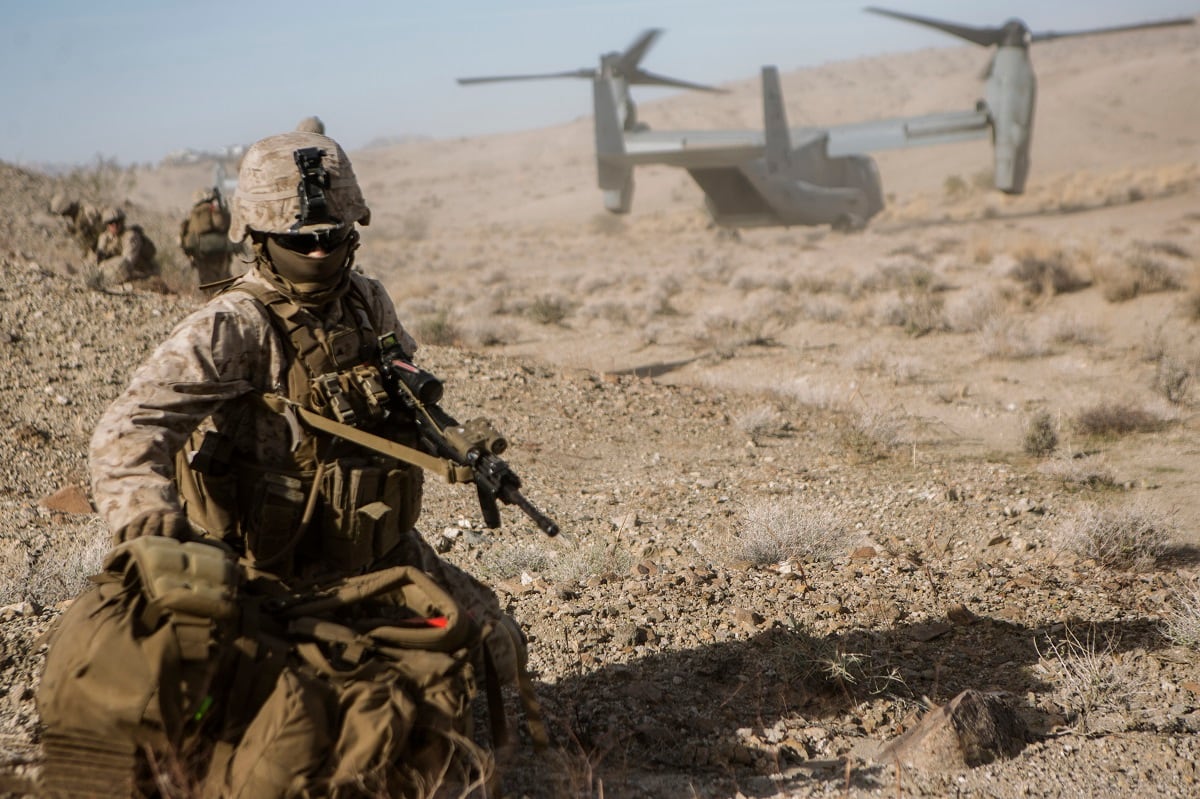As the Marine Corps hones its warfighting skills, planners are looking for new ways to go off-script and get adversaries who punch back as hard as they’re hit.
That’ll be necessary for any future near-peer fight, in which air dominance and control of the battlefield will be under constant attack from adversaries ranging as big as Russia and China, or nonstate actors probe Marine resolve in the “gray zone” below the threshold of combat.
To that end, some big changes are coming to how Marine leaders will see if their units are up to the test, from the small unit to the large-scale Marine Air Ground Task Force level.
RELATED

Sometime early this year, at the Marine Corps Air Ground Combat Center at Twentynine Palms, California, the British will “invade.”
Actually, what will happen is a force-on-force battle between a yet-to-be identified Marine unit and a comparable British Royal Marine unit.
That was announced by Commandant Gen. Robert B. Neller in November.
But that isn’t all. To encourage force-on-force freeplay, Neller said he’s working out a follow-on fight with a Canadian unit, and expects the Army will want to drive on down and “get a piece” at some point.
Those fights fall in line with efforts to get Marine commanders challenges from non-Marine leaders, see if their opponent will think differently, expose their weaknesses and challenge their methods.
“We need to give leaders opportunities to get out there and make decisions, and if they make mistakes out there, that’s fine,” Neller said at the time. “We need to have people feel the effects of failing against a peer.”
Also, in November, the head of the Marine Corps Warfighting Lab, Brig. Gen. Christian Wortman, told reporters that MCWL is building a cadre of eight to 10 full-time experimental Opposition Force team to challenge amphibious and expeditionary war planning and exercises.
Wortman didn’t divulge too many details, but did say that the cadre will be experienced “across all domains,” meaning it will look at how to disrupt command and control, information operations, kill chains and sensor-driving fighting.
That pits advanced thinking in areas where few Marine units have been challenged during nearly two decades of post-9/11 counterinsurgency and counterterrorism fighting.
But while top-level thinkers will be looking at those areas and commanders down to the captain and sergeant ranks will be peering into their networks and systems during tactical drills, other training challenges will return to the primitive.
Neller envisions Marines in training scenarios not only looking at the high-tech aspects of what they do but also the simpler items of “just going to the field and living on the ground,” digging fighting positions and backing away from ready-made areas such as the Forward Operating Bases that became a main feature of recent deployments.
They’ll get back to basics, such as fieldcraft skills such as camouflage netting, setting security and running offensive and defensive patrols and running their own resupply.
This is an excerpt from “19 Things You Need to Know in 2019,” in the 12-31 print edition of Marine Corps Times.
Todd South has written about crime, courts, government and the military for multiple publications since 2004 and was named a 2014 Pulitzer finalist for a co-written project on witness intimidation. Todd is a Marine veteran of the Iraq War.









